Five Iowa State Researchers Receive NSF CAREER Awards
Posted Jul 12, 2021
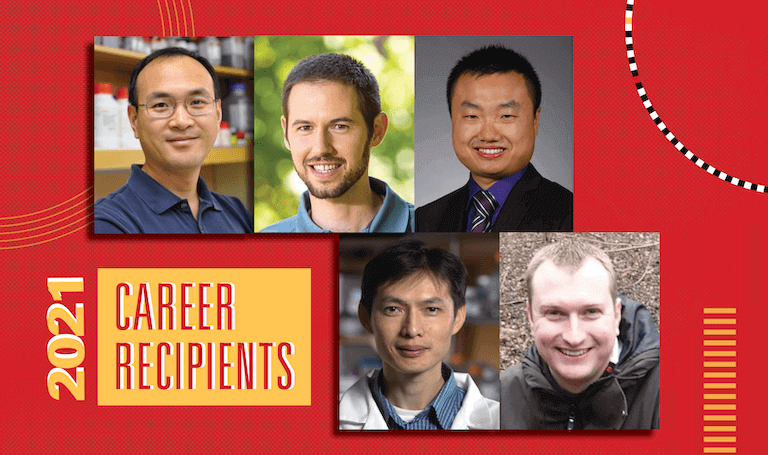
Posted Jul 12, 2021

Five Iowa State University researchers have been selected to receive Faculty Early Career Development Program (CAREER) awards from the National Science Foundation during the 2021 fiscal and academic year, adding to the record-breaking number of university recipients last year.
Considered to be the most prestigious award of the National Science Foundation (NSF), the CAREER program supports early-career faculty who have the potential to serve as academic role models in research and education. The five 2021 Iowa State CAREER awards represent more than $4 million in federal funding earmarked to pursue research emphases ranging from exploring cellular functions to implementing the use of smart data.
This year’s recipients represent continued excellence of Iowa State scholars in pursuing and obtaining competitive CAREER program awards. Between 2016 and 2019, the NSF awarded 24 CAREER awards to Iowa State early-career scholars, followed by a record-breaking 10 more — totaling $2.7 million in program funding — in 2020.
“Our CAREER award recipients truly embody the ‘Innovate at Iowa State’ spirit,” said Vice President for Research Peter Dorhout. “These early-career faculty are creating new knowledge and developing new technologies that have the potential to deliver innovative solutions for challenges that impact our state and the world around us. Just as importantly, they’re guiding and shaping ISU students through engaged research so they will become the next wave of researchers who continue to identify and develop solutions to society’s greatest challenges.”
Baoyu (Stone) Chen, assistant professor of biochemistry, biophysics, and molecular biology
Proposal Title: “Biochemical and Structural Mechanism of the WASH Regulatory Complex”
Total Intended Award Amount: $1,616,045
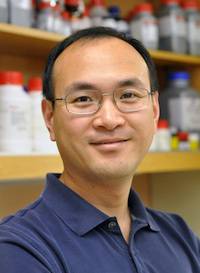 Like a city, cells are filled with heavy traffic. The traffic is made up of tiny parcels called vesicles, which contain molecules to be sent to their correct destinations. Movement of this traffic allows cells to perform important tasks, from simply surviving and absorbing nutrients to responding to their environment. The traffic converges at a “parcel distribution center” called endosomes, that are larger membrane-enclosed structures that decide where molecules are sent. Endosomes are coated with fibers made up of a protein called actin. Similar to muscles and bones in the human body, actin fibers give endosomes proper shape and strength. Without actin, endosomes collapse, and the traffic fails. Chen’s project will explore how cells produce actin fibers to support the structure and function of endosomes. Results of this project will provide fundamental knowledge about how endosomes form correct structures and direct cellular traffic properly. In parallel with research priorities, the project will integrate multiple new approaches to improve the infrastructure of biochemical education and research for undergraduate and graduate students. These include:
Like a city, cells are filled with heavy traffic. The traffic is made up of tiny parcels called vesicles, which contain molecules to be sent to their correct destinations. Movement of this traffic allows cells to perform important tasks, from simply surviving and absorbing nutrients to responding to their environment. The traffic converges at a “parcel distribution center” called endosomes, that are larger membrane-enclosed structures that decide where molecules are sent. Endosomes are coated with fibers made up of a protein called actin. Similar to muscles and bones in the human body, actin fibers give endosomes proper shape and strength. Without actin, endosomes collapse, and the traffic fails. Chen’s project will explore how cells produce actin fibers to support the structure and function of endosomes. Results of this project will provide fundamental knowledge about how endosomes form correct structures and direct cellular traffic properly. In parallel with research priorities, the project will integrate multiple new approaches to improve the infrastructure of biochemical education and research for undergraduate and graduate students. These include:
Nigel Reuel, associate professor of chemical and biological engineering
Proposal Title: “Real-Time Control of Cell Differentiation Using Reinforcement Learning”
Total Intended Award Amount: $554,338
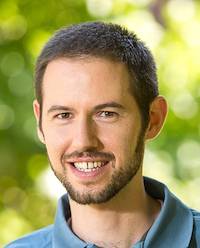 Differentiated stem cells are a promising method for treating many chronic diseases, but they are limited by costly manufacturing methods. Reuel’s project will test the hypothesis that active control (machine learning assisted learning from real-time sensors) will improve the reproducibility of these cells over current static recipes. The quality and manufacturing process of cell therapies must be improved to provide a more sustainable cost point and so all cells have a necessary level of therapeutic activity. This research project will develop a framework that can be applied to any cell differentiation pathway and can be updated as new real-time sensors are developed, stimulation cues are discovered, and new disease targets are identified. In addition, the project will improve student and public understanding of machine learning approaches through an interactive art exhibit. This work will enable practical manufacturing of regenerative medicines designed to replace damaged or diseased cells, as well as education of machine learning-based numerical methods and process control strategies for engineers.
Differentiated stem cells are a promising method for treating many chronic diseases, but they are limited by costly manufacturing methods. Reuel’s project will test the hypothesis that active control (machine learning assisted learning from real-time sensors) will improve the reproducibility of these cells over current static recipes. The quality and manufacturing process of cell therapies must be improved to provide a more sustainable cost point and so all cells have a necessary level of therapeutic activity. This research project will develop a framework that can be applied to any cell differentiation pathway and can be updated as new real-time sensors are developed, stimulation cues are discovered, and new disease targets are identified. In addition, the project will improve student and public understanding of machine learning approaches through an interactive art exhibit. This work will enable practical manufacturing of regenerative medicines designed to replace damaged or diseased cells, as well as education of machine learning-based numerical methods and process control strategies for engineers.
Zhaoyu Wang, associate professor of electrical and computer engineering
Proposal Title: “Learning Smart Meter Data to Enhance Distribution Grid Modeling and Observability”
Total Intended Award Amount: $500,714
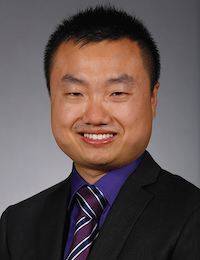 Achieving and maintaining a reliable and environmentally sustainable electricity supply is vital to the nation’s economy and the wellbeing of its inhabitants. A major stumbling block standing in the way of optimizing the efficiency, flexibility, and resiliency of existing power grids is an overall lack of systematic situational awareness due to limited sensor data and incomplete or incorrect grid models. Smart Meters (SMs) are a widely deployed — but largely under-utilized — tool that could help U.S. utilities deliver electricity more reliably, more efficiently, and at lower lost. In this five-year project, Wang, will lead an effort to provide the theoretical and computational foundation that will unlock the untapped potential of SMs and radically enhance distribution grid observability in both normal and outage conditions. Another key component to the project is forging strategic alliances with power industry participants in Iowa State’s Electric Power Research Center to help facilitate industry adoption of the innovative developments the research produces. The broader impacts of the project include integrating power engineering education and data science through training professional workforces, developing open-source datasets, and providing outreach to high-school students for interactive learning of smart grids.
Achieving and maintaining a reliable and environmentally sustainable electricity supply is vital to the nation’s economy and the wellbeing of its inhabitants. A major stumbling block standing in the way of optimizing the efficiency, flexibility, and resiliency of existing power grids is an overall lack of systematic situational awareness due to limited sensor data and incomplete or incorrect grid models. Smart Meters (SMs) are a widely deployed — but largely under-utilized — tool that could help U.S. utilities deliver electricity more reliably, more efficiently, and at lower lost. In this five-year project, Wang, will lead an effort to provide the theoretical and computational foundation that will unlock the untapped potential of SMs and radically enhance distribution grid observability in both normal and outage conditions. Another key component to the project is forging strategic alliances with power industry participants in Iowa State’s Electric Power Research Center to help facilitate industry adoption of the innovative developments the research produces. The broader impacts of the project include integrating power engineering education and data science through training professional workforces, developing open-source datasets, and providing outreach to high-school students for interactive learning of smart grids.
Bradley Miller, associate professor of agronomy
Proposal Title: “Hillslope Morphology Never Stops: Validating Hillslope Evolution Models on Transport Limited, Low Relief Landscapes”
Total Intended Award Amount: $574,217
 Conventional agricultural practices are causing soil erosion rates that threaten agricultural sustainability. Although climate models predict continued increases in the severity of floods and losses in crop productivity, they currently do not consider how landscapes change over time. Instead, they rely on topographic data and soil maps that assume these aspects of the landscape remain constant. Miller’s project goal is to assemble an erosion-deposition model for landscapes where the rate of sediment transport, not the rate of weathering, limits the amount that those processes change the topography and soil properties of hillslopes. If successful, this knowledge will be crucial for incorporating landscape change into models that predict the impacts of climate change, including the effects on flooding and crop productivity. The model will also be able to be used to generate scenarios of landscape change from real landscapes, which can be explored and employed as an educational tool through a publicly accessible online interface. In addition, the scope of this project includes developing training and curriculum materials in collaboration with educators experienced with delivering earth science content to diverse student audiences.
Conventional agricultural practices are causing soil erosion rates that threaten agricultural sustainability. Although climate models predict continued increases in the severity of floods and losses in crop productivity, they currently do not consider how landscapes change over time. Instead, they rely on topographic data and soil maps that assume these aspects of the landscape remain constant. Miller’s project goal is to assemble an erosion-deposition model for landscapes where the rate of sediment transport, not the rate of weathering, limits the amount that those processes change the topography and soil properties of hillslopes. If successful, this knowledge will be crucial for incorporating landscape change into models that predict the impacts of climate change, including the effects on flooding and crop productivity. The model will also be able to be used to generate scenarios of landscape change from real landscapes, which can be explored and employed as an educational tool through a publicly accessible online interface. In addition, the scope of this project includes developing training and curriculum materials in collaboration with educators experienced with delivering earth science content to diverse student audiences.
Hua Bai, assistant professor of genetics, development, and cell biology
Proposal Title: “Understanding Peroxisomal Stress Responses”
Total Intended Award Amount: $1,212,704
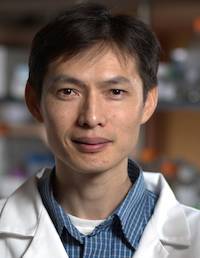 The microscopic compartments inside cells that facilitate oxidation reactions and are involved in the biosynthesis and breakdown of fatty acids, are known as peroxisomes. Healthy, functioning peroxisomes are vital to maintaining cell equilibrium, but our knowledge and understanding of peroxisomes is limited. Using advanced techniques – CRISPR-based screening and genome editing, live-cell imaging tools – Bai and his team hope to uncover cellular “surveillance pathways” and stress responses induced by defective peroxisomes. The educational goal of this project is to provide all STEM students with hands-on experiences in genetic and cell biology research in a supportive learning environment that encourages creative problem-solving and promotes critical thinking skills. These educational activities will include: developing an innovative undergraduate laboratory course to provide students with hands-on experience in genome editing and imaging techniques; and engaging undeclared students in genetic and cell biology research through partnership with “The Sky is the Limit” learning community. These integrated education programs will engage larger and more diverse groups of undergraduate students in biology research and make basic research more inclusive.
The microscopic compartments inside cells that facilitate oxidation reactions and are involved in the biosynthesis and breakdown of fatty acids, are known as peroxisomes. Healthy, functioning peroxisomes are vital to maintaining cell equilibrium, but our knowledge and understanding of peroxisomes is limited. Using advanced techniques – CRISPR-based screening and genome editing, live-cell imaging tools – Bai and his team hope to uncover cellular “surveillance pathways” and stress responses induced by defective peroxisomes. The educational goal of this project is to provide all STEM students with hands-on experiences in genetic and cell biology research in a supportive learning environment that encourages creative problem-solving and promotes critical thinking skills. These educational activities will include: developing an innovative undergraduate laboratory course to provide students with hands-on experience in genome editing and imaging techniques; and engaging undeclared students in genetic and cell biology research through partnership with “The Sky is the Limit” learning community. These integrated education programs will engage larger and more diverse groups of undergraduate students in biology research and make basic research more inclusive.